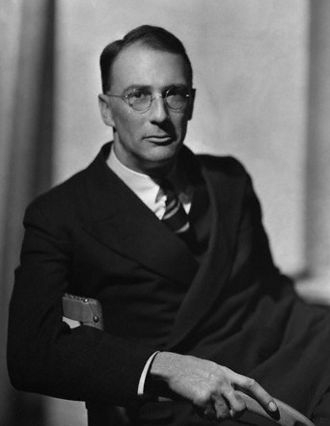The Peacemaker
Book Details
| Title: | The Peacemaker | ||||||||||
| Author: |
| ||||||||||
| Published: | 1934 | ||||||||||
| Publisher: | Famous Fantastic Mysteries, February 1948 | ||||||||||
| Tags: | science fiction | ||||||||||
| Description: | In one of London's outer suburbs lived a shabby, insignificant schoolteacher with a repulsive, drunken wife. Experimenting with his secret invention was his only escape—until his headmaster's pacifist daughter brought sex and idealism into his life. Could the sexual awakening of this shy, retiring man have inspired him to create the chaos that now reigned throughout London? Was it possible that he was the "Peacemaker"—that curious lunatic who wrote to The Times threatening to spread confusion until there was total disarmament? [Suggest a different description.] |
||||||||||
| Downloads: | 268 | ||||||||||
| Pages: | 69  |
Author Bio for Smith, Cecil Louis Troughton

Forester wrote many novels. He is best known for the 12-book Horatio Hornblower series, depicting a Royal Navy officer during the Napoleonic wars. He began the series with Hornblower fairly high in rank in the first novel, published in 1937. The last completed novel was published in 1962. With demand for more stories, Forester filled in Hornblower's life story, in effect. Hornblower's fictional feats were based on real events, but Forester wrote the body of the works carefully to avoid entanglements with real world history, so that Hornblower is always off on another mission when a great naval victory occurs during the Napoleonic Wars.
Forester's other novels include The African Queen (1935) and The General (1936); Peninsular War novels in Death to the French (published in the United States as Rifleman Dodd) and The Gun (filmed as The Pride and the Passion in 1957); and seafaring stories that did not involve Hornblower, such as Brown on Resolution (1929), The Captain from Connecticut (1941), The Ship (1943), and Hunting the Bismarck (1959), which was used as the basis of the screenplay for the film Sink the Bismarck! (1960). Several of his works were filmed, including The African Queen (1951), directed by John Huston. Forester is also credited as story writer for several movies not based on his published fiction, including Commandos Strike at Dawn (1942).
He wrote several volumes of short stories set during the Second World War. Those in The Nightmare (1954) were based on events in Nazi Germany, ending at the Nuremberg Trials. Stories in The Man in the Yellow Raft (1969) followed the career of the destroyer USS Boon, while many of those in Gold from Crete (1971) followed the destroyer HMS Apache. The last of the stories in Gold from Crete was "If Hitler had invaded England", which offers an imagined sequence of events starting with Hitler's attempt to implement Operation Sea Lion, and culminating in the early military defeat of Nazi Germany in the summer of 1941. His non-fiction seafaring works include The Age of Fighting Sail (1956), an account of the sea battles between Great Britain and the United States in the War of 1812.
In addition to his novels of seafaring life, Forester published two crime novels (Payment Deferred (1926) and Plain Murder (1930)) and two children's books. Poo-Poo and the Dragons (1942) was created as a series of stories told to his younger son George to encourage him to finish his meals. George had mild food allergies that kept him feeling unwell, and he needed encouragement to eat. The Barbary Pirates (1953) is a children's history of early 19th-century pirates.--Wikipedia.
Available Formats
No book directory. Upload has not been completed.This book is in the public domain in Canada, and is made available to you DRM-free. You may do whatever you like with this book, but mostly we hope you will read it.
Here at FadedPage and our companion site Distributed Proofreaders Canada, we pride ourselves on producing the best ebooks you can find. Please tell us about any errors you have found in this book, or in the information on this page about this book.